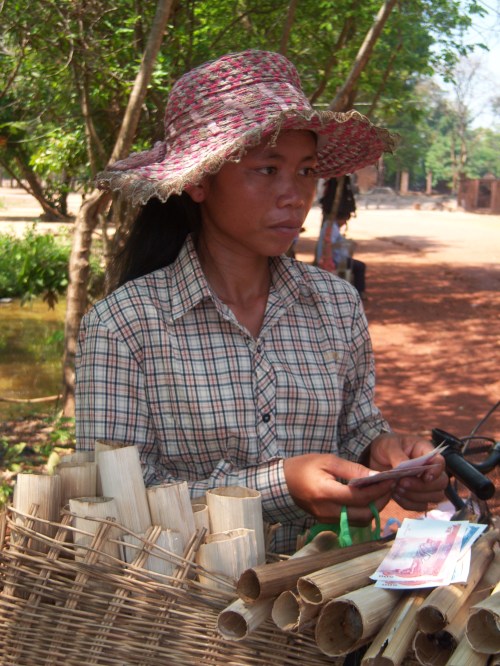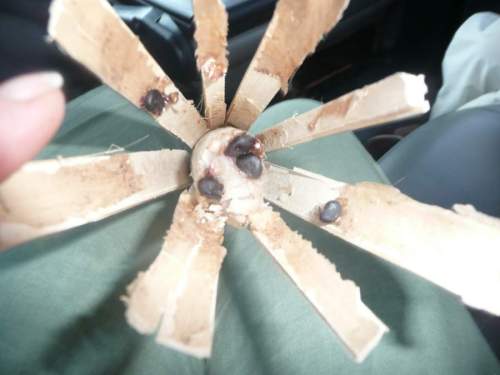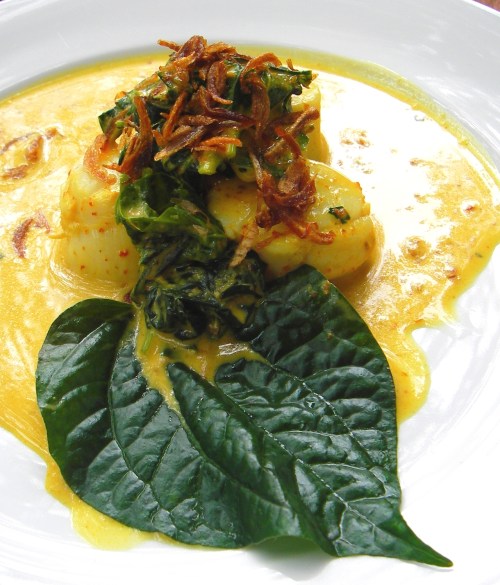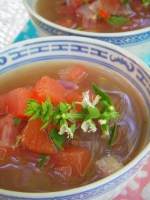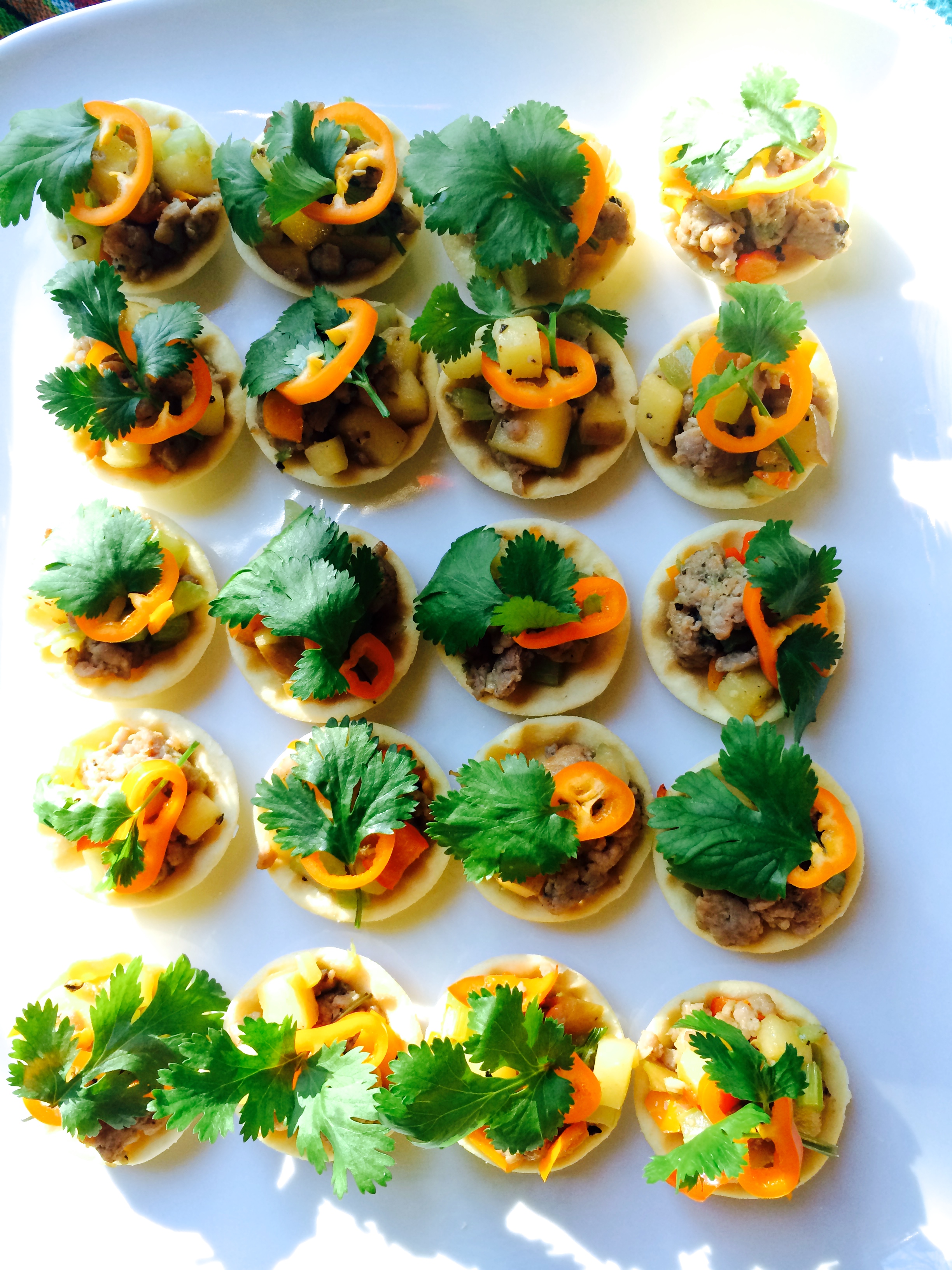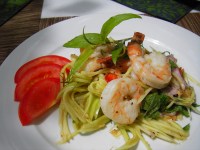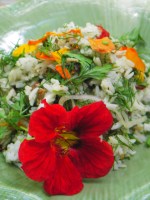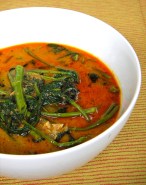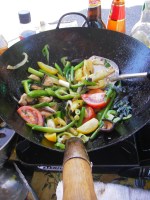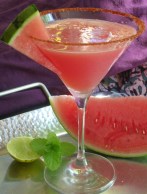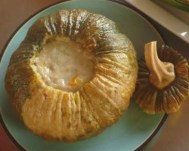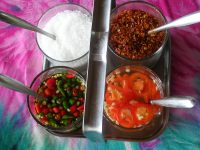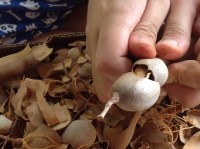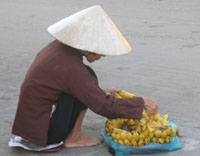From Las Delicias with Love
It was Mother’s Day, May 8, 2011, when I arrived as part of a team of eight gracious women in the Nicaraguan village of Las Delicias. The village is situated in the hilly northern area in the Matagalpa region and is surrounded by coffee plantations. We were there with the organization BuildOn to present the community with a new school on behalf of many generous donors from the United States.

May 8, 2011, Las Delicias
The welcoming and celebrating event was an indescribably heart-warming experience. It took place right on the grounds of the future school. For the next four days, our host families shared their food, their houses and their children with us and our lives were enriched by their culture, foods and hospitality.

Dinner with Rice, banana and bean
Jacqualee, one of my group members, and I were fortunate to have Thelma and Ricardo and their daughter Helene as our host family. A typical day began around 5:30am with the sound of Thelma’s tortilla-making or the rooster’s cock-a-doodle-doo. Then we would have breakfast at 7am before going to work on the building project with local volunteers. A typical meal for breakfast, lunch or dinner was corn tortillas, rice, bananas, and beans, accompanied by either eggs or chicken.
Jacqualee and I were very excited when Thelma and Ricardo asked if we could teach them the cuisine we ate back home. We happily agreed and I cooked up the menu with Jacqualee. I wanted something practical that Thelma would enjoy cooking for her family and that would use ingredients that were available in her backyard or the local market—forget about Tom Yum Goong and fancy Thai dishes. We decided on Son-In-Law Eggs, Mango Salad and Sweet Rice, Bananas & Beans Wrapped in Banana Leaf.

Banana leaf just right outside
We started with Kao Tom Mud. First Ricardo helped with cutting the banana leaf from the tree which was right outside in their yard. I removed the stems and tore the leaves into pieces 8 inches wide, then cleaned them well with a damp cloth to remove dirt. I only had to show Thelma once how to use the banana leaf for wrapping, then she took over the task with confidence. We made enough of them to give some to her neighbor.
While it was in the steamer, we prepared mango salad and son-in-law eggs. While we were cooking, Danilo, our translator, translated our cooking lesson from English into Spanish. Danilo helped me explain the most important part of Thai cooking was the harmonious blend of the four essential flavors of Thai cooking: sweet, sour, salty and spicy. The sweet was the sugar, the sour available to us was mango and two citrus juices, the spicy was Nicaraguan chili and, the salty was salt and the salty peanut that Jacqualee brought from home. I loved listening to Danilo speaking in Spanish explaining to Thelma about sweet, sour, salty and spicy. It was one of the highlights for me personally and professionally, and cooking for Thelma and Ricardo gave us a chance to thank them for their warm welcome to their home.
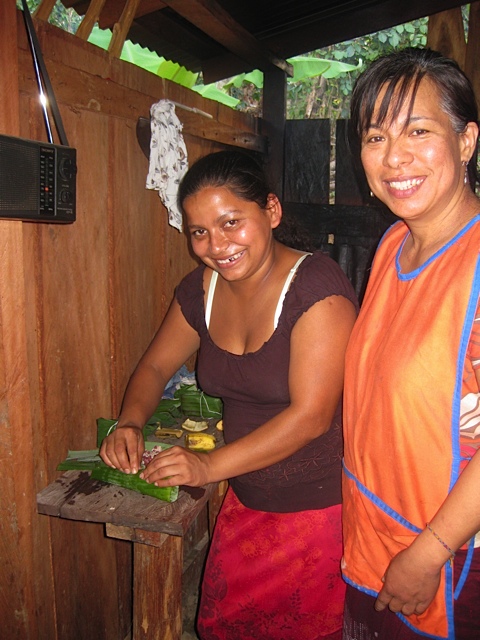
Thelma wrapped rice, banana and bean with banana leaf
I have used my recipe below countless times in cooking classes. It is basically a two-stage process. In the first stage, the sticky rice cooks until it has a sticky texture but it is still grainy and raw and is ideal for wrapping around a banana. It is pliable like playdough to form or shape and then it gets wrapped by the banana leaf. The second stage is the actual cooking of Kao Tom Mud, which is generally done by steaming. We steamed the rice and banana all the way through, which can take from 30 to 50 minutes. After 30 minutes of steaming, open one up to check if more steaming time is needed.

Kao Tom Mud
In my Seattle kitchen, I love to put the wrap on the grill or in the oven for the second stage, which is how I teach it in my classes. Now that summer is finally here, I hope that you will enjoy preparing this recipe either in a steamer or on your grill. Banana leaves are easy to find in local Asian markets in the freezer section.
I hope that you will enjoy cooking rice, banana, and beans wrapped with banana leaves. You will feel like you are in the tropical countries of Thailand or Nicaragua.

Kao Tom Mud, Steamed Sweet Rice and Banana Wrapped in Banana Leaf

Sweet Rice and Banana Wrapped in Banana Leaf
Kao Tom Mud
ข้าวต้มมัด
Servings: 8
2 cups Thai sticky rice, soaked for 3 hours or overnight, and drained
¾ cup coconut milk
¼ cup water
2 tablespoons granulated sugar, optional
1 cup canned black beans, drained, optional
1 teaspoon salt
2 bananas, peeled, cut in half lengthwise and also crosswise to get 4 pieces from each banana
8 (8 X 8-inch) banana leaves or pieces of parchment paper
Stir sticky rice, coconut milk, sugar and salt together in a large pan over medium heat. Stir until all the coconut milk is absorbed. Stir in black beans and fold gently to mix.
Divide sticky rice mixture into 8 equal portions. Spread each portion onto a banana leaf, spreading to cover an area 6 by 4 inches, then place a section of the banana in the center. Fold the banana leaf to wrap the sticky rice around the banana.
Then fold the banana leaf into tamale-like envelope and secure both ends with a toothpick that pokes down and then up through the banana leaf. Grill for 5 minutes on each side, or until the sticky rice is translucent and cooked.
Pranee’s note:
If banana leaf is not available, you can use parchment paper. See Pranee’s Grill Sticky Rice in Bamboo Tube Recipe for details.

Image by chooyutshing via Flickr
Related articles
Read Full Post »













































